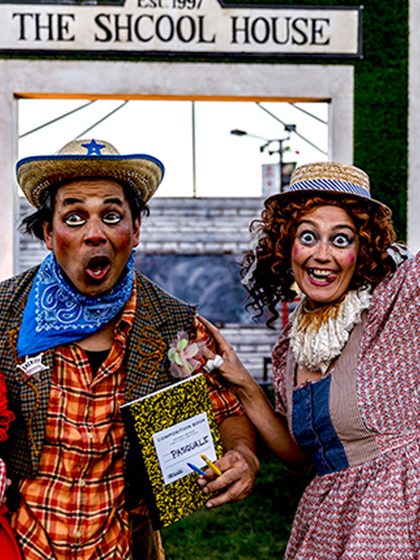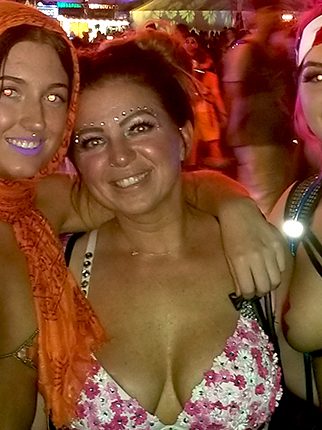‘Dancefloor Thunderstorm’: Documenting the Early Years of the American Rave Scene
“The general history of rave music in this country has come in a period of waves. The first wave lasted roughly from 1988 to about 1994. This is basically the period where the seeds of this whole movement were sown. Then around 1994, there was a big media and police crackdown on ‘demon raves’ being blamed for corrupting the youth. It was just ridiculous.”

Michael Tullberg is sitting outside of a tiny café in Los Angeles’ Larchmont Village to discuss his new book,Dancefloor Thunderstorm but the conversation has turned into a breakdown of the rave scene in America and its murky history.

“Around the end of ‘95 and the beginning of ‘96—which is when I began to get involved in this whole thing—that’s when the second wave kicked in, and the scene in America just exploded,” the Boston native and longtime L.A. resident continues. “This covers the time period in my book, which is roughly 1996 through 2002. That’s when you had the rise of the massives like Electric Daisy Carnival, Audiotistic and Nocturnal Wonderland. It’s when the music truly spread across the country and the first crop of homegrown talent really achieved more commercial success—artists like DJ Dan, Christopher Lawrence, Sandra Collins, Mark Farina.”
“There’s no reason why this culture should not be celebrated like hip-hop or punk or jazz.”
For Tullberg, that era of the American rave underground is his sweet spot, when he was a regular fixture at events primarily in Southern California, capturing the manic energy and budding culture with his camera. He’s collected a trove of those images for Dancefloor Thunderstorm, juxtaposing shots of artists including Richie Hawtin, Massive Attack, Crystal Method and more alongside the people who populated those parties (replete in proto-rave fashions), everywhere from long-gone hotels to the deserts of the Inland Empire.
“I took inspiration from another book, What Kind of House Party Is This? by Jonathan Fleming,” Tullberg says of the Dancefloor Thunderstorm’s genesis. “He was my contemporary over at Mixmag during the original acid house explosion. I didn’t know much about the rave scene at that point here in the US, but when I saw that book, I got it. It was so visually dynamic. He was using a lot of techniques that I would come to also develop in my work. He was going out of his way to show the whole vibe and energy of the scene. To me that was really important, because at the time a lot of the club magazines in the early and mid-‘90s—the photography was so boring, just frozen and sterile. He was determined to get that whole rave vibe on film, and I was inspired by it.”
More than just capturing that moment in time, Tullberg was creating his own style of art, which emerged from some unexpected influences far beyond dance music and deep into the classics.

“For the first couple of years, what I was doing was using really high-speed film with long exposures, because I was trying to take inspiration from impressionist and post-impressionist paintings like Monet and van Gogh,” he explains between sips of blood orange lemonade. “I noticed that when you took high-speed film and blew it up to make big prints, that grain became enormous and resembled impressionist paintings. Those artists celebrated underground life of their times. Some of those painters were scandalized for their work. I saw a connection between that and the rave underground. There’s no reason why this culture should not be celebrated like hip-hop or punk or jazz.”
“The mainstream media did all it could in those days to shit on rave culture and the people in it.”
The book went from inspiration to reality after a highly successful crowd-funding campaign on the website Indiegogo, where he was able to raise the money to cover printing costs for the project.
“That was a really great example of the rave community rising up and making it all possible. Getting a 300-page coffee table photo book printed up is not cheap. When I considered the different options to raise the money to do this, I figured since this is about the rave community, why not approach them directly?”

Citing Ken Burns’ celebrated Jazz series on PBS as another influence behind Dancefloor Thunderstorm, Tullberg hopes his book’s main message doesn’t get lost on a new generation immersed in the current EDM world.
“I want to convey the incredible explosion of energy, warmth and happiness that came out of that scene, especially since the mainstream media did all it could in those days to shit on rave culture and the people in it,” he stresses.

Tullberg recommends that anyone looking to get a copy of his book should go to the official website, since it won’t be made available on any major retailers like Amazon. A handful of stores around the Los Angeles area will be carrying it, including DJ Ron D. Core’s long-running Dr. Freecloud’s Record Shoppe in Fountain Valley. He also plans on release an e-book sequel in the future, highlighting outtakes that didn’t make the initial release.

“There were so many incredible parties and moments. We were so spoiled back then,” he muses when pressed to point toward one defining moment from his time embedded in the nascent rave scene. “There were different moments that were fantastic for different reasons—like the JuJubeats party in 1999. Doc Martin comes on the decks at like 7 o’clock in the morning. He’s returning to the scene after being on his back for several months from pancreatic failure; he’s lost a lot of weight. He starts playing as the sun is coming up, and the set he puts on just lights the crowd ablaze. Everyone just went nuts. It was such a moment, and one that I’ll never forget.”





